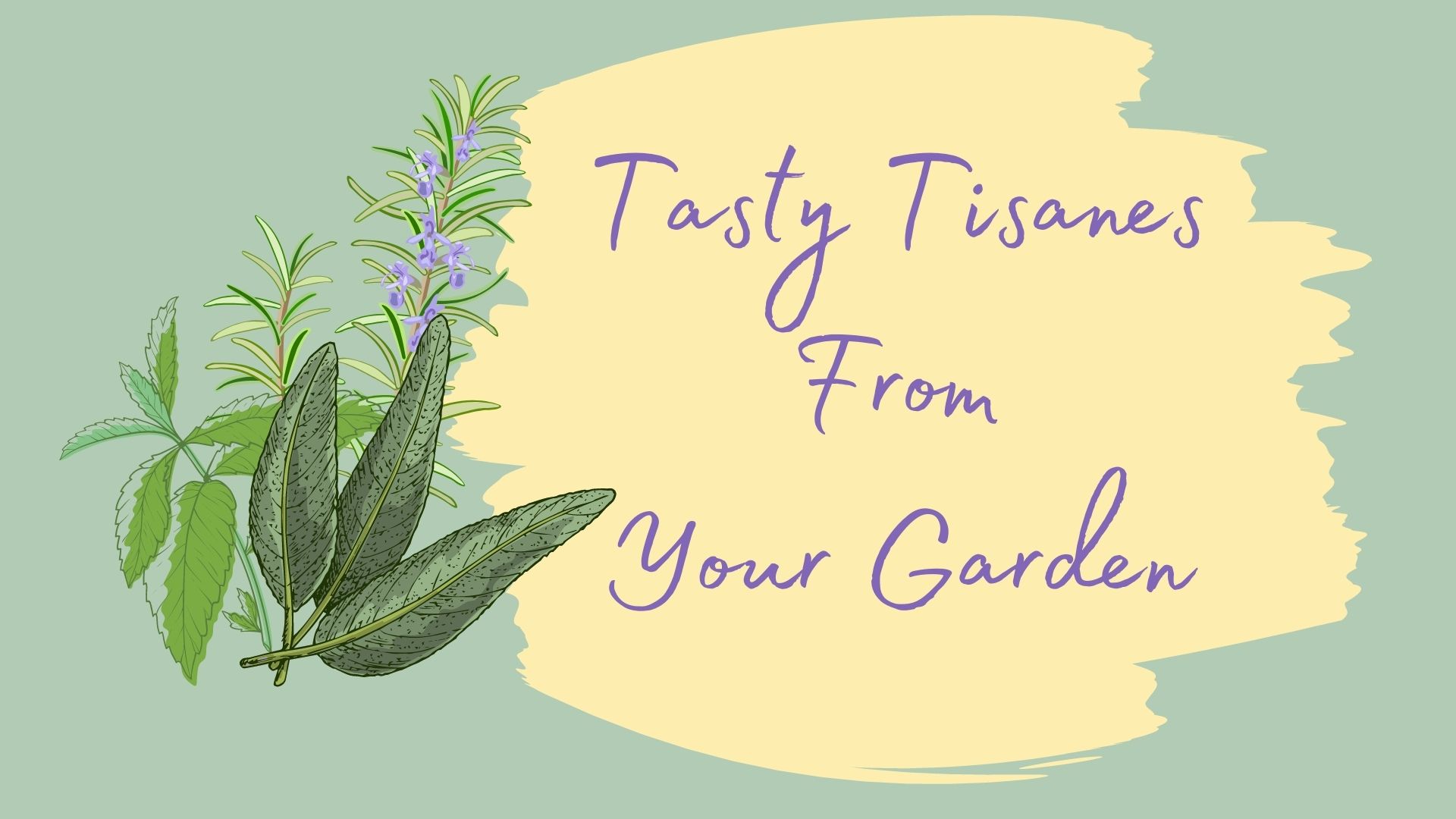A tisane or herbal tea is a caffeine-free alternative to the true green, or black teas derived from the Camellia sinensis plant. Tisanes are infusions or decoctions made from any other plant, usually spices, roots, seeds, leaves, and bark.
Tisanes can be comforting warmed on a chilly evening or refreshing chilled on a warm summer day. They can be used as mixers for cocktails and mocktails.
Many popular tisane ingredients are perennials and pollinators. You can pick the ingredients and use them fresh or research how to dry them.
If your garden has been plentiful, it might be a good opportunity to try a garden-fresh tisane. Be sure to know your plants so you avoid any poisonous plants or pesticides. Remember, some herbs and plants can interact with medications you may be taking. Some are not recommended for women who are pregnant. Always research your medications or check with your doctor prior to using herbal supplements, tisanes or other remedies.
Here is some information on the five main types of tisanes:
- Leaf tisanes: Leaf-based tisanes like lemon verbena, peppermint, chamomile, and echinacea are among the most common. Dill and chamomile tisanes were used by ancient Egyptians for their health properties. Mint tisanes have been used for soothing properties. When preparing leaf tisanes, bring your water to just below its boiling point before steeping the tisane to avoid scorching the delicate herbs.
- Fruit tisanes: Fruit tisanes are naturally sweetened, caffeine-free blends of fruit, spices, and herbs. Most fruits can be used as ingredients in a fruit tisane. Fruit pieces, fruit leaves (raspberry leaf is a popular fruit tisane ingredient), and natural flavorings like cocoa and vanilla are commonly used to make fruit tisanes. Adding citrus rinds like lemon or orange peel to a tisane can add a level of brightness and acidity without the addition of juice. Combine fruit pieces with herbs and roots to add balance to a homemade tisane infusion.
- Flower tisanes: Flowers like rose hips and lavender petals are the most used ingredients in flower tisanes. They taste lightly sweet not floral. The familiar fragrant smells amplify the herbal taste of the tisane, setting a relaxing tone with the first sip.
- Spice and root tisanes: Spices like cardamom and fennel deliver big flavor in a tisane. Using crushed fresh cardamom, caraway, fennel seeds or leaves, or licorice (star anise) in a tisane requires restraint and balance. If you use too much, the tisane may taste bitter, but the right amount of spice can enhance the character of these harmonious ingredients. The earthiness of green cardamom combines well with mint. Steep whole slices of fresh turmeric or ginger root in your tisane and mellow the intensity of the roots while delivering their healthy properties.
- Toasted whole grain tisanes: Toast whole grains like barley to enhance their natural oils before steeping a savory tisane. Whole grain tisanes often include sugar and lemon or lime juice. The steeped grains can be left in or strained out before consuming the drink.
Dried herbs can also be used in tisanes, but they have a more concentrated flavor than fresh herbs, so less is required when cooking. Dried ground herbs are more concentrated than dried flaky herbs, so even less is required. Use these ratios when using dried and ground herbs:
- 4-to-1 ratio of fresh to ground dried or 1 tbsp. fresh = ¾ tsp. ground dried
- 6-to-1 ratio of dried leaf herb to ground dried herb or 1 tbsp. of dried leaf herb = 1/2 tsp. of ground dried herb
Try these recipes or mix and match your favorite garden produce in a hot or iced tisane, mocktail or cocktail.
Thyme and Honey Tisane Recipe
Ingredients:
(makes 8 ounces)
- 1 teaspoon thyme, fresh or dried
- 1 Tablespoon honey
- 8 ounces very hot water
Directions:
- Steep the thyme in nearly boiling water for 3-5 minutes.
- Add the honey and stir thoroughly.
- If it’s not sweet enough, add more honey.
Honey Rosemary Tisane
Ingredients:
makes one serving
- One 2-inch sprig of fresh rosemary
- honey
- water
Directions:
- Start by placing a 2-inch rosemary sprig in your favorite mug.
- Next, drizzle the rosemary with honey to taste.
- Finally, fill your mug with water from the hot side of your water cooler and stir.
Sage and Mint Tisane Recipe
Ingredients:
makes 8 ounces
- 1 teaspoon fresh or dried sage leaves
- 1 teaspoon fresh or dried mint leaves
- 8 ounces hot water
Directions:
- Steep the sage and mint in nearly boiling water for 3-5 minutes.
- Add honey, Stevia, or cane sugar to sweeten, if desired.

